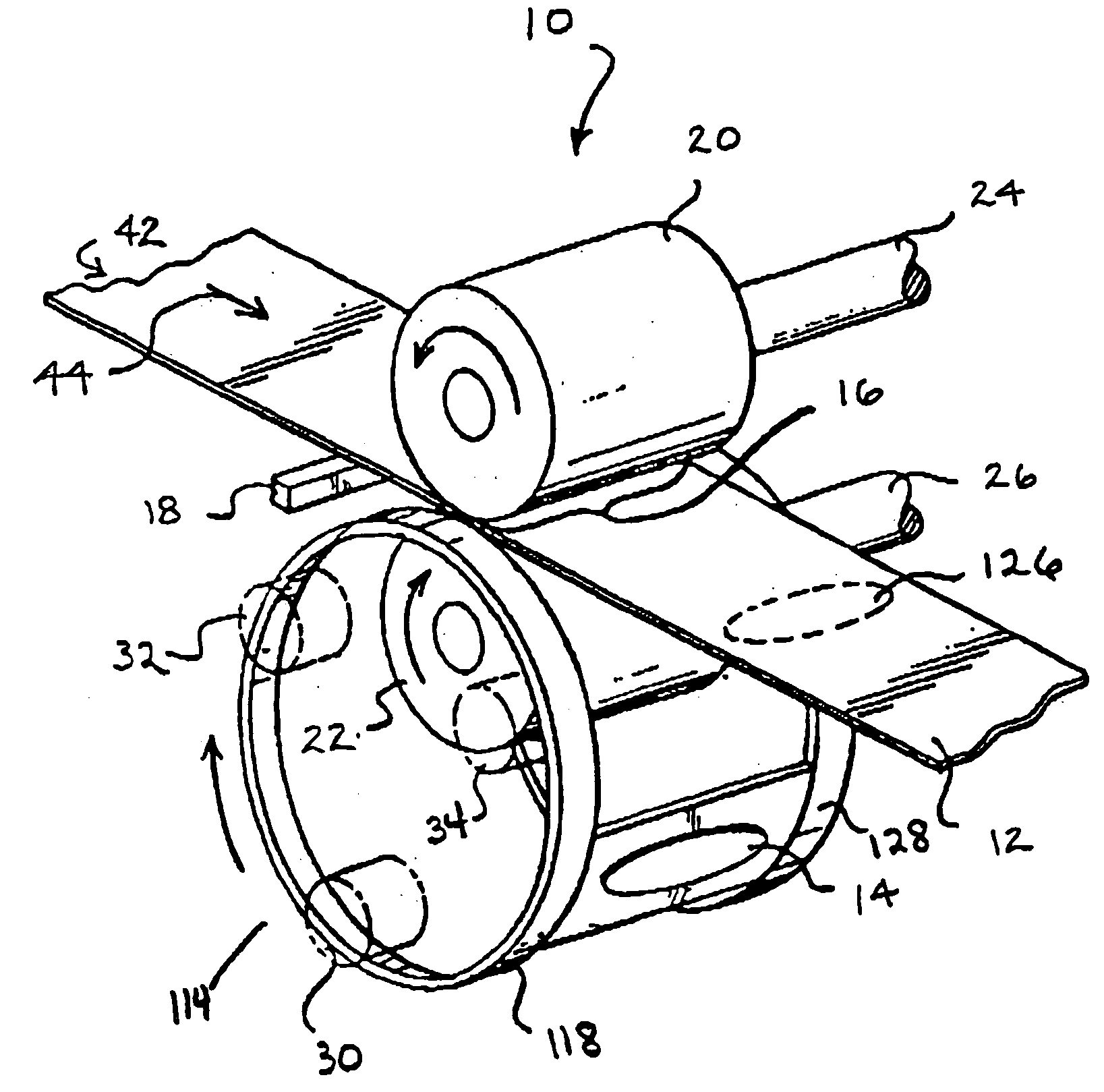Method and apparatus for forming microstructures on polymeric substrates
a polymeric substrate and microstructure technology, applied in dough shaping, manufacturing tools, instruments, etc., can solve the problems of inability to achieve high-efficiency injection molding, etc., to achieve the effect of increasing the thickness of the stamper
- Summary
- Abstract
- Description
- Claims
- Application Information
AI Technical Summary
Benefits of technology
Problems solved by technology
Method used
Image
Examples
Embodiment Construction
[0042] Reference is now made in more detail to the various aspects and several embodiments of the present invention(s).
[0043] Referring now to FIG. 1, depicted therein is a device for forming optical memory in accordance with the present invention. The device includes a web payoff device, or simply a web payoff (not shown), a web path in which web material 12 travels, and a web forming apparatus disposed in the web path. The web forming apparatus 10 includes a stamper 14. The stamper carries a microstructure image for forming web. The stamper is carried by a support 28 and may be heated by any suitable heating device 18 and / or may also be heated by a drum or roller 22 in thermal contact with the stamper.
[0044] A pressure roller 20 and a backing roller 22 may be disposed in the web path to press the stamper into the surface of web material. The pressure roller and the backing roller form a nip zone 16. As shown, the nip zone 16 includes the narrowest region between the pressure rol...
PUM
| Property | Measurement | Unit |
|---|---|---|
| Thickness | aaaaa | aaaaa |
| Thickness | aaaaa | aaaaa |
| Thickness | aaaaa | aaaaa |
Abstract
Description
Claims
Application Information
 Login to View More
Login to View More - R&D
- Intellectual Property
- Life Sciences
- Materials
- Tech Scout
- Unparalleled Data Quality
- Higher Quality Content
- 60% Fewer Hallucinations
Browse by: Latest US Patents, China's latest patents, Technical Efficacy Thesaurus, Application Domain, Technology Topic, Popular Technical Reports.
© 2025 PatSnap. All rights reserved.Legal|Privacy policy|Modern Slavery Act Transparency Statement|Sitemap|About US| Contact US: help@patsnap.com



